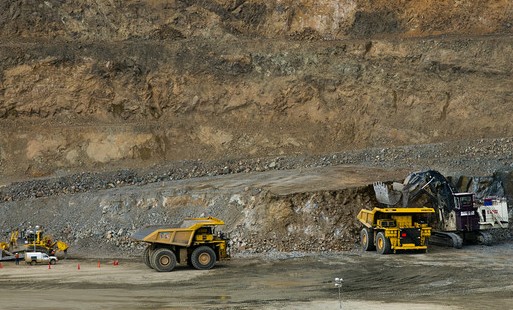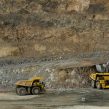
Major Revision of Mongolian Mining Regulations Is Underway
Publication: Eurasia Daily Monitor Volume: 10 Issue: 42
By:

The first public debate on the proposed revisions of Mongolia’s mining regulations was conducted at the Citizen’s Hall of the Mongolian government on January 18, 2013. Although the revisions are long overdue, legislators appear to be in agreement that more deliberations are necessary in order to reflect the concerns and suggestions of miners, investors and the public prior to submitting the final bill to the parliament. As stressed by Tsagaan Puntsag, the head of the presidential office, lawmakers avoided politicizing the revisions, opting instead to push for a more comprehensive, long term regulatory framework (Minutes of Debate, Citizen’s Hall of Mongolia, https://www.irgen.org).
Since 1994, the Mongolian parliament has revised the mining regulations several times to attract foreign investments in the 1990s and later to ameliorate domestic concerns over corruptions and irresponsible mining activities in 2000–2010. Although the Mongolian government concluded the first major investment agreement with the Western companies Rio Tinto and Ivanhoe Mines Ltd. over the Oyu Tolgoi copper deposits in 2009 (Press Releases of the Mongolian Government, Rio Tinto, October 6, 2009), the country’s mining sector has experienced three major challenges.
The foremost issue of concern is environmental damage. Due to loose environmental standards and limited bureaucratic capacity to enforce environmental laws and regulations, artisanal mining—which began with the government’s “Gold program” in 1990—as well as exploration and mining activities by domestic and foreign companies have caused extensive environmental harm. In particular, herders experienced increased pollution of their normal water sources and pastures. Pushed by demands from environmental and local activists, the parliament quickly approved the Law on the Prohibition of Minerals Exploration in Water Basins and Forested Areas (known as Law with the Long Name) in 2009. Under the law, the government cancelled over 200 mining and exploration licenses that operate within 200 meters from water and forest sources (https://politics.news.mn/content/110242.shtml). However, this sudden measure caused intense opposition from miners while raising public expectations for stricter enforcement and revisions in the major mining and environmental legislation.
Corruption is the second challenge. As a result of the politicization of the public service and transitional difficulties experienced by the judiciary and bureaucracy, corrupt practices became widespread in the government agencies—in particular, the provincial authorities as well as the Mineral Resources Authority of Mongolia (MRAM), which oversees mining licenses. According to various corruption assessments, the mining sector was regarded as one of the sources for corruption (https://pdf.usaid.gov/pdf_docs/PNADE136.pdf). A recent trial of a number of MRAM officials illustrates this widespread corruption. After a yearlong investigation, the former director and officials of MRAM were sentenced for illegally issuing 120 mining licenses, including the extension of four licenses of the SouthGobi Sands Company (News.mn, Bloomberg, January 31). Although some suspect the investigation was one sided and politically motivated—and clearly only addressed activities from the last two years—it will certainly appease the public’s call for transparency and accountability in mining licenses.
Local communities as well as domestic businesses have generated the final challenge. Under current mining regulations, local communities who are most affected by mining activities are left out of the decision-making process. Moreover, small- and medium-sized mining companies contribute less to local economic development, but their activities cause more local damage given the weak environmental protection regime and limited state capacity to deal with irresponsible mining practices. In comparison to the 1990s, domestic business entrepreneurs and entities have increased their demands that the government support their initiatives to play a broader role in the mining sector. For example, a consortium of Mongolian companies was established in 2010 to participate in major mining projects such as the Tavan Tolgoi coal deposit (Unuudur, November 24, 2010). Furthermore, the Mongolian business community increasingly demands legal mandates that would force foreign investors to contract with local businesses.
In response to these challenges, President Tsakhiagiin Elbegdorj suspended the issuance and processing of both mining and exploration licenses in 2010, until comprehensive revisions were made to the existing regulations. The presidential decision was subsequently endorsed by members of the National Security Council and the parliament (Parliamentary Resolutions to Extend Suspension of License Issuance in 2010, 2011, 2012, Legal Data Base of the Government, www.legalinfo.mn). Consequently, the earlier working group on mining law revision was expanded to include parliamentarians, government officials and experts and began to work under the auspices of the presidential office from 2011.
Unlike earlier mining legislation, the current law-making procedure has several unique features. First, Mongolia is relying heavily on its own experts and experience of mining in comparison with its reliance on foreign experts in the mid-1990s. The lawmaking capacity of the government bureaucracy was also noticeably enhanced by the inclusion of professionals educated in developed countries, in particular Australia. Moreover, the government has accumulated substantial experience in dealing with both foreign and domestic investors at different scales. Second, as indicated by the president and working group members, Mongolia has studied the practices of resource-based economies like Australia, Canada and Scandinavia, in addition to the examples of Chile and other developing states (https://president.mn/eng/newsCenter/viewEvent.php?cid=&newsId=711&newsEvent=). Third, the lawmaking process has been very inclusive and avoids the dangers of politicization. By comparison, the Windfall Profit Tax Law (2006), the strategic deposit amendment to the Mining Law (2006), the Law with the Long Name (2009), and the Strategic Entities Foreign Investment Law (2012) were passed with little deliberation and limited consultation from miners, activists and the public because the law-making process was driven by the political calculations of parties and politicians. This time, the draft was debated at the National Security Council, parliamentary standing committee and, importantly, the Citizens’ Hall since April 2011. The Citizens’ Hall, established by the presidential office in 2009, is a key venue to facilitate public deliberations on the revision of the mining law. Meanwhile, in order to address public concerns, the working group has engaged civil society activists, local governments, government agencies and various professional organizations.
The new mining law will introduce stricter environmental requirements (in particular relating to mine closures and rehabilitation), increased local participation by delegating the initial approval authority to local communities, improved control and enforcement by the government bureaucracy (especially in license issuance), and greater requirements for local development and local sourcing. Broad agreement exists on the need for comprehensive revisions to the mining law, although some criticism remains over the new proposed license classifications and increased role for government as well as local community participation. Nevertheless, the government is finally responding to public discontent over the consequences of decades of weak mining regulations. Consequently, Mongolia will likely avoid both resource nationalism as well as the resource curse.




